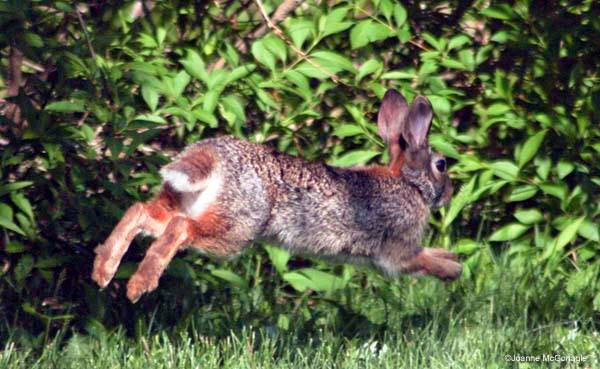
Wild Rabbits Habitat, Behavior, and Conservation
The world of wild rabbits presents a fascinating study of adaptability and survival. Wild rabbits, often synonymous with the species Oryctolagus cuniculus, are found globally and are known for their distinct long ears and fluffy white tails. These small herbivores play a crucial role in ecosystems, serving as both prey and as browsers that help maintain vegetation balance.
In North America, wild rabbits such as the New England and Eastern Cottontail have adapted to various environments. These species can thrive in diverse habitats, ranging from woodlands to grasslands, exhibiting incredible resilience. Predators pose a constant threat, influencing their typically short lifespans in the wild.
Understanding the ecological impact of wild rabbits is essential, as they not only shape their environment but also influence the survival of predator species. Their dynamics with other wildlife and humans continue to spark curiosity and conservation efforts, making them an essential subject for wildlife enthusiasts and researchers alike.

The Biology of Wild Rabbits
Wild rabbits, primarily known for their agility and distinctive fur, exhibit unique biological traits. Varied species classifications, diverse physical characteristics, specific dietary patterns, and notable reproductive habits define their existence and adaptation to environments worldwide.
Species Classification and Distribution
Wild rabbits belong to the family Leporidae and include several species, with the Sylvilagus floridanus or eastern cottontail being among the most notable. These mammals are commonly found across North and South America, adapting to a range of habitats from meadows to woodlands. The rabbit’s adaptability to varying climates and terrains has led to its widespread distribution across continents, playing a significant role in various ecosystems.
Physical Characteristics and Identification
Characteristically, wild rabbits possess a compact, egg-shaped body structure. The fur is typically agouti-colored, providing effective camouflage in natural habitats. Wild rabbits commonly weigh between 2 to 3 pounds. An essential aspect of identification is their long ears, which serve as effective sound receptors and help regulate body temperature, ensuring survival in diverse environments.
Dietary Patterns
Wild rabbits are herbivores, primarily consuming grasses, wildflowers, and leaves. Their digestive system is specifically designed to process tough plant material, enabling them to extract maximum nutrients. The cecotrope, a type of fecal pellet, is re-ingested by rabbits to further absorb nutrients, a distinctive feature of their dietary habits, ensuring energy efficiency for survival and growth.
Reproductive Habits
Wild rabbits exhibit a high reproductive rate, with breeding occurring mainly in spring and summer. A female, or doe, can produce multiple litters per year, each consisting of three to eight kits. Gestation lasts about 28 to 31 days. This prolific breeding habit ensures population sustainability despite high predation rates, making their reproductive capacity a crucial aspect of their biology.

Habitat and Shelter
Wild rabbits adapt to a diverse range of environments, each offering unique forms of shelter and habitat. They prefer areas providing protection from predators and extreme weather conditions, with elements like brushy cover and dense vegetation playing a vital role in their survival.
Habitat Preferences
Wild rabbits, such as the eastern cottontail, thrive in environments featuring moderate cover and accessibility to food sources. They often choose areas with brushy cover or thickets, which provide both hiding spots and rich vegetation.
Natural landscapes like meadows, grasslands, and forests offer diverse foliage that supports their dietary needs. These areas often have a mix of different plant species, essential for their grazing habits. The availability of nutritious plants ensures they can sustain their population while also remaining discreet in their chosen terrain. Rabbits gravitate towards locations that offer a combination of open spaces for movement and dense vegetation for safety.
Natural Cover and Shelter-Building
Rabbits build intricate networks of burrows and nests, adjusting to various landscapes. Brush piles and dense undergrowth offer essential cover, helping them evade predators. These shelters are often located in areas like woods and thickets, where the natural vegetation naturally provides security.
In addition to utilizing natural features, rabbits sometimes select human-altered landscapes, such as pastures or ditches, to construct their nests. These managed environments can offer the same protective cover and food availability found in the wild. Using such adaptive strategies, wild rabbits effectively establish their homes, ensuring their survival across numerous habitats.

Foraging and Feeding Behavior
Wild rabbits primarily engage in foraging to meet their dietary needs. They feed on a varied range of plant materials, utilizing different strategies to extract nutrients from their environment.
Common Foods and Foraging Strategies
Rabbits have a diet predominantly composed of grasses and clover, which are abundant in their natural habitats. They also consume a variety of woody plants and leaves, depending on availability.
List of common foods include:
- Grasses
- Clover
- Woody plants like dogwood and sumac
- Leaves from plants such as maple
During certain seasons, wild rabbits diversify their diet with fruits, such as blackberries and grapes. Their foraging strategies incorporate grazing on available ground-level vegetation and browsing leaves from shrubs and trees. These feeding habits make them highly adept at utilizing diverse plant resources.
Adaptations for Herbivory
The unique digestive system of wild rabbits is specially adapted for a herbivorous diet. Their specialized teeth continually grow, which is critical for cropping tough plant materials. Likewise, their digestive process enables them to effectively extract nutrients.
Rabbits have a cecum, which significantly aids in breaking down fibrous plant matter. This adaptation is crucial for feeding on nutrient-rich yet hard-to-digest parts of plants. Such physiological features allow rabbits to thrive on a diet that might not be nutritionally adequate for other animals.
Predators and Threats
Wild rabbits face numerous challenges in their natural habitats. Predators play a significant role, as do the adaptations that rabbits have developed for survival against these threats. This section explores these elements and provides insight into their interactions with the surrounding environment.
Natural Predators
Wild rabbits are prey to a wide range of predators. Birds of prey, such as owls and hawks, are known for hunting these small mammals from above, taking advantage of their superior vision and stealthy approach. Terrestrial predators, including coyotes, foxes, and even domesticated dogs, pose a threat on the ground, often utilizing speed and cunning to catch their prey.
In some regions, rabbits also contend with snakes and weasels, adding to the complexity of their survival. In areas like Australia, introduced species such as feral cats and dingoes further complicate their existence, disrupting natural predator-prey dynamics. Collectively, these threats require rabbits to remain constantly alert and prepared to flee at a moment’s notice.
Survival Strategies and Adaptations
Rabbits have developed several adaptations to evade their predators. Their acute hearing allows them to detect threats from significant distances, with ears that rotate to pinpoint the direction of sounds. Their keen eyesight includes a wide field of vision, enabling them to spot danger quickly. Speed and agility are vital, as they can make rapid directional changes to escape.
Additionally, they utilize their burrows, commonly known as warrens, as safe havens from predators. Social structures and communication through various signals help in alerting the group of potential threats. These physical and behavioral adaptations create a dynamic interplay with their environment, enhancing their survival potential despite the risks they face.
Conservation and Human Impact
The situation of wild rabbits is shaped by various conservation challenges and the impacts of human activities. This section explores their current conservation status, the consequences of urban development, and the nature of human-wildlife interactions.
Conservation Status
Rabbits, with 63 known wild species, face different levels of risk. According to the International Union for Conservation of Nature (IUCN), 22 of these species are near threatened to critically endangered. Loss of habitat and competition for food with domestic animals are key factors contributing to their decline.
Efforts to conserve vulnerable rabbit species involve habitat restoration and legal protections. Conservation programs often collaborate with local communities to mitigate threats. Monitoring populations ensures that conservation strategies are effective.
Impact of Urban Development
Urban development poses significant challenges to rabbit habitats. Construction activities lead to habitat loss, limiting the areas where rabbits can thrive. This is especially relevant in regions like Oklahoma, where land use changes disrupt wildlife ecosystems.
Pollution and water scarcity due to urban sprawl also affect rabbit populations. Infrastructure development can fragment habitats, isolating groups and reducing genetic diversity. Efforts to create green corridors aim to connect fragmented habitats, providing pathways for rabbits and other wildlife.
Human-Wildlife Interactions
Human interactions with rabbits can be complex. While they are often regarded as agricultural pests, leading to crop damage, they also play a role in local ecosystems. Measures to manage rabbit populations include non-lethal methods to reduce harm.
Education about the ecological value of rabbits helps improve human-wildlife coexistence. Awareness programs encourage practices that minimize conflicts, such as using rabbit-proof fences in gardens. These initiatives promote a balanced approach, aiming for harmony between human activities and wildlife conservation.

Frequently Asked Questions
Wild rabbits exhibit fascinating behaviors and characteristics that often prompt questions. They play specific roles in their habitats and can be differentiated from hares and domestic rabbits.
Are wild rabbits a threat to human safety?
Wild rabbits are generally not considered a threat to humans. They tend to avoid human interaction, preferring to stay hidden or flee when approached. Issues typically arise only when rabbits intrude on gardens or crops, prompting the need for humane deterrence methods.
What is the typical population density of wild rabbits in their natural habitat?
Population density for wild rabbits can vary based on location and resource availability. In suitable environments with abundant food and cover, rabbit populations can number several individuals per hectare. This can fluctuate due to factors such as predation, disease, and food supply.
Could you list some distinctive characteristics of cottontail rabbits?
Cottontail rabbits are easily recognized by their short, fluffy tails resembling cotton balls. They often have grayish-brown fur with lighter undersides and large, expressive eyes. Eastern cottontails are most common, and their agile movements allow them to quickly escape predators.
Do wild rabbits tend to be solitary or social creatures?
Wild rabbits are typically solitary, especially species like the Eastern cottontail. They are often seen alone except during the breeding season or when a mother rabbit is caring for her young. In contrast, feral rabbits can exhibit more social behaviors, forming small groups.
What are the differences between a hare and a rabbit?
Hares differ from rabbits in several ways. Hares are generally larger, have longer ears and hind legs, and are known for their speed. They tend to live above ground and are born fully furred with open eyes. Rabbits, on the other hand, often use burrows and have offspring that are born blind and hairless.
What habitats are preferred by cottontail rabbits?
Cottontail rabbits thrive in diverse habitats, including meadows, fields, and forest edges that offer ample cover and food resources. Dense brush or thickets provide protection from predators, while open areas near these shelters allow them to forage efficiently. They are adaptable and can sometimes be found in more urban settings with sufficient vegetation.